Empty wet Main Street
Food passed through window, she smiles.
Petals stuck to glove.
We’ll be leaving this little two room cottage soon, moving to a larger rental next week. It’s been a place for us to retreat and regroup, heal our wounds these last six months. We’ll miss it.
There’s a small pond through the woods. The bullfrogs chuckle and moan all night. We’ve had a lot of rain this year, good for frogs.
And fireflies. i’ve never seen so many. They rise from the grass at twighlight, a living net of liminal phosphorescent green. By full dark they’ve clustered in the trees, stitching them with Christmas lights. On a night like tonight, before the full moon appears, the whole world sparkles with stars, above and below.
– postcards from the road

Forty years ago, in my first semester of college, I bought some plants to furnish the room. The dorms were dim and dogeared, depressing. Plants were cheaper than chairs, so I picked some up at a campus sale, all in little 4″ pots. For a few bucks they brought a little life into the place. At least for a while. The room was so dark, most of them died by the end of the first year.
One, though, managed to hang on. An odd little thing, just a grey scaly bulb the size of a billiard ball, with skin like an elephant, half buried in the soil. A stout trunk tapered up from the bulb, topped with a pom-pom of grassy green leaves. It looked like something right out of Dr. Seuss. A botany major friend determined it was a ponytail palm. I became rather fond of it. Frond of it?
The next year I moved off campus and it came with me, suffering mightily for the rest of my college career – knocked over by inebriated housemates, dug up and defecated on by ill-behaved cats, neglected when I went away for holidays. Even stayed home alone the summer I went abroad. It survived all that, and eventually outgrew the original pot, earning a splurge on a new larger non-plastic container.
I left college, and the plant came with me.
Years went by and wherever I went the plant went, too. Cars and furniture and clothes and jobs got shed along the way, dead husks shucked off like snake skins, but after each purge the plant remained. If I dug through all the photos of my life over the past 40 years, this one odd thing would keep popping up in the background like a silent Forrest Gump:
All the while that funny little plant kept going, eventually filling a large oriental porcelain pot the size of a bucket, standing in the corner so tall it brushed the 9 foot ceilings in our house.
Until the night of the fire.

When we walked through the house the next day, all the plants were wilted, black like everything else. That night it got down to 16 degrees. Though heat from the fire kept the whole house warm for a day, it dipped below freezing every night the following week. There was no power and no heat in the house. Everything froze.
Seven days after the fire, I gave Doug a tour of the damage. When we came to this plant – black and wilted, covered in soot –he said, you know, that’s a pretty big root ball, it might be OK, maybe you could save it?
So a few days later I took it out back, lopped off the stalk, and stuck it in the neighbor’s spare room with the other smokey things we hoped to save. A month after that, I brought it to the cottage, still bare and black, and set it near the window and watered it.
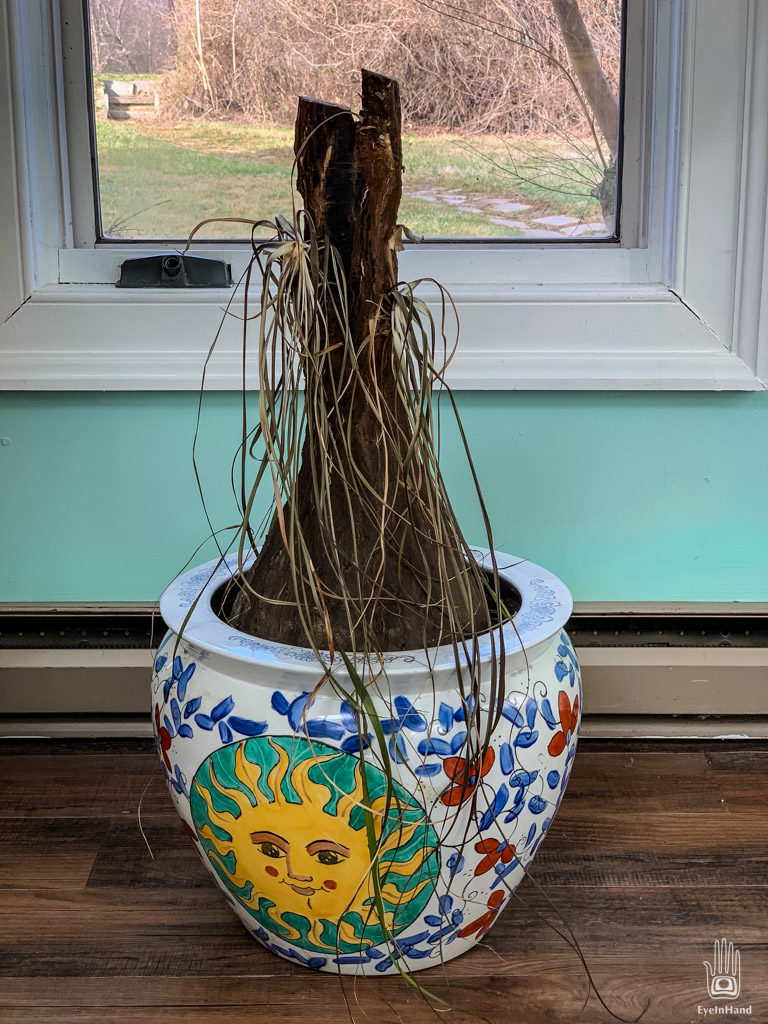
A month later still, two months after the fire, I noticed a small lump on the stalk. Then, a few days later, a tiny spud of green broke through.
I tipped the pot over and let all the black sooty water drain out, added some fresh soil. A week later, another spud appeared, then another.
Now, there are several sprouts of green, and it seems this tough old plant refuses to die.
When I lived in Savannah, I discovered a remarkable native plant called “Resurrection Fern“. It spreads out along the top of big Live Oak limbs forming a fringe of little bonsai forests.
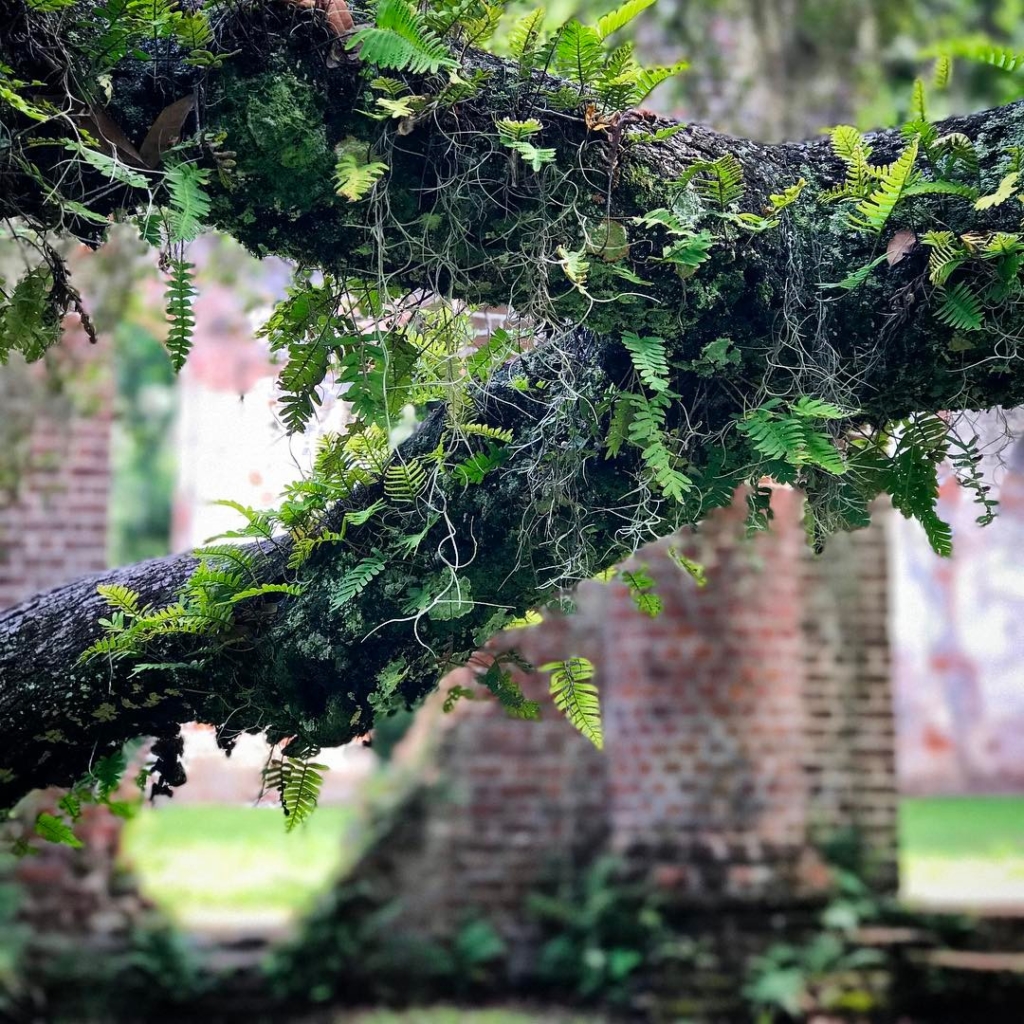
An epiphyte, it has no root system, since there’s no soil where it grows. It clings to the bark and survives in the humid southern air on nutrients in the dust and rain dripping down the limbs.
In periods between rains it turns grey and shrivels up like origami ashes, losing up to 97% of it’s moisture and going dormant. But it revives and turns vivid green again within hours after the first splash of rain. Most plants die after losing only 10% of their water, and don’t come back. These plants could remain dormant without water for over a century, and still revive.
Very impressive, these little ferns.
So I’m christening this tough and homely house plant of mine the Resurrection Palm.
OMG! It lives!
Six Terabytes of data, over 50 thousand photos, all the raw and finished video footage, hours and hours and hours of it. Everything. Going all the way back to 2004. Photos of the girls since middle school, scans of family prints now gone, the boat building and sailing archives, travels, life.
Somehow tonight they all came back from the grave.
I had given up on it all. Already mourned the death, mentally buried the body and said last rights. And yet, still.
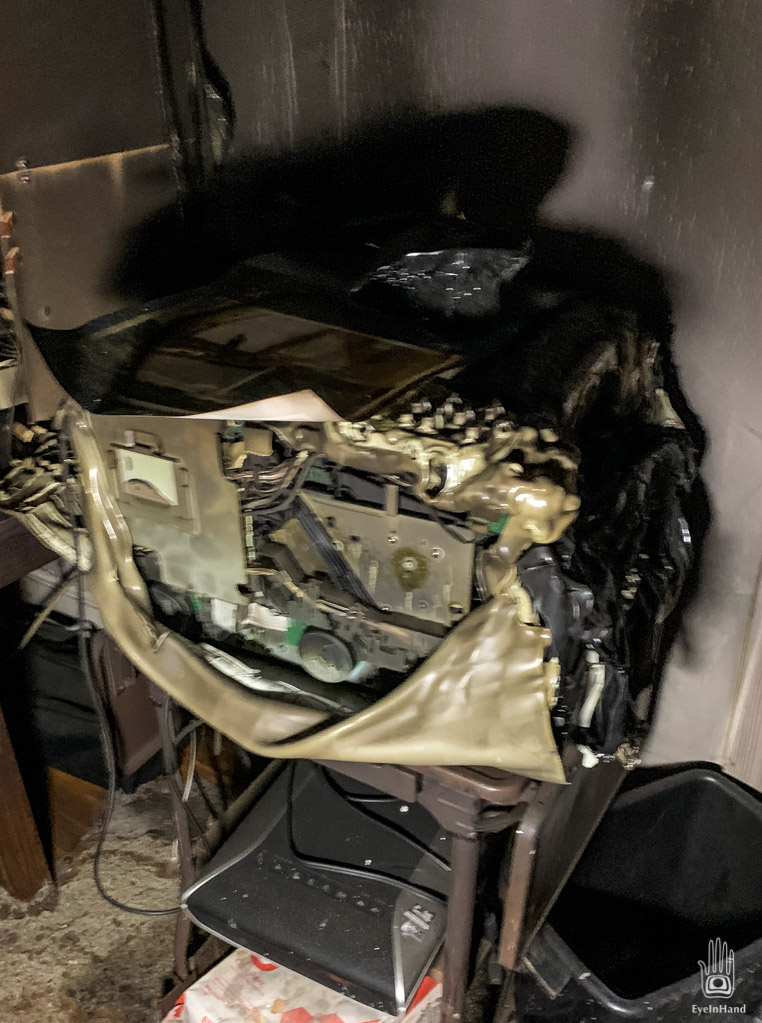
Next to the living room, the office got it almost as bad. Smoke and flames and water. The intense heat melted anything made of plastic, making macabre Dali-esque drip art. Then smoke and soot seeped into the smallest crevices, turning all black. Then the water and foam from the firemen. The room was several inches deep in water before they were done, dripping through the floor to the workshop below throughout the next day.
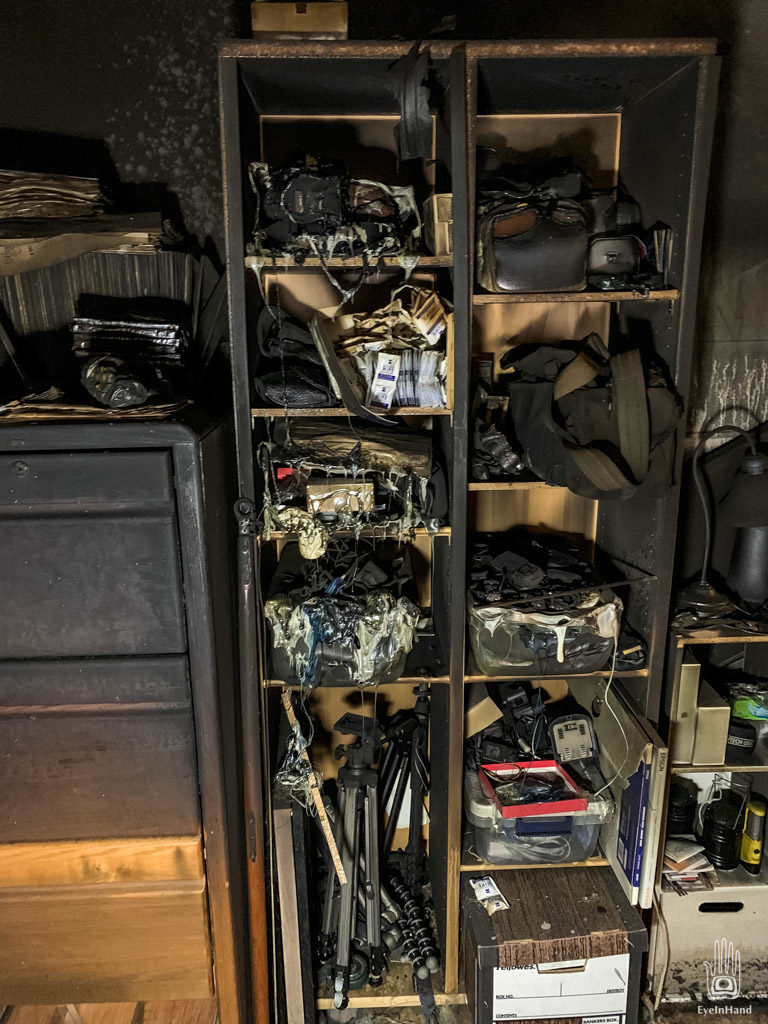
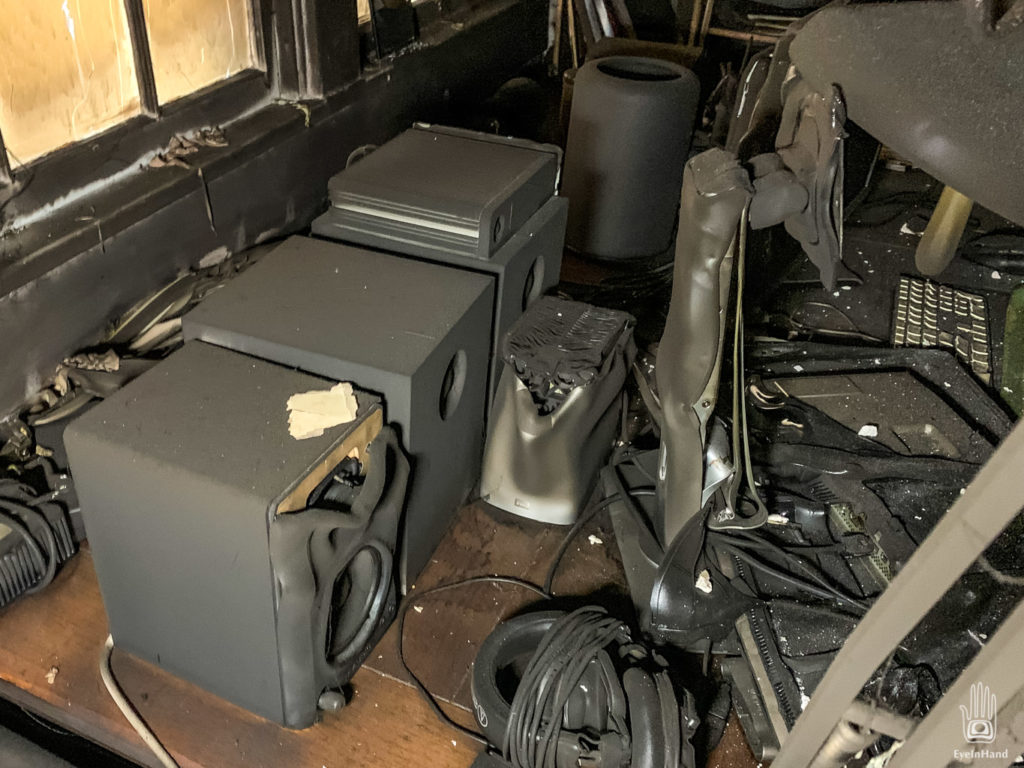
Days after the fire, I went in and collected the hard drives. All the wires, the power supplies, and the cases of the cheaper backup drives, all melted. I yanked out what remained of the cables and put the bodies in a plastic tub in the boatshed, where they sat in the freezing cold for over a month, drying out.
I assumed they were all lost. Had to. Too hard to hope. But, still, mapped out a plan to try and recover what I could. It would require buying exact copies of each, sometimes used on ebay, and transferring the guts of the deceased into the bodies of the still living.
Last weekend the burned drives came to the cottage where they got cleaned off as best I could, at least so I could handle them. On some, the cases had to be broken off with pliers to access the drives within.
Tonight a duplicate of the main RAID storage unit arrived. I borrowed the power supply and cables from the new one, updated software on the laptop, and plugged it in, fully expecting to have to pull out the drives and transplant them. But low and behold, the dang thing fired right up and mounted on the desktop. Amazing.
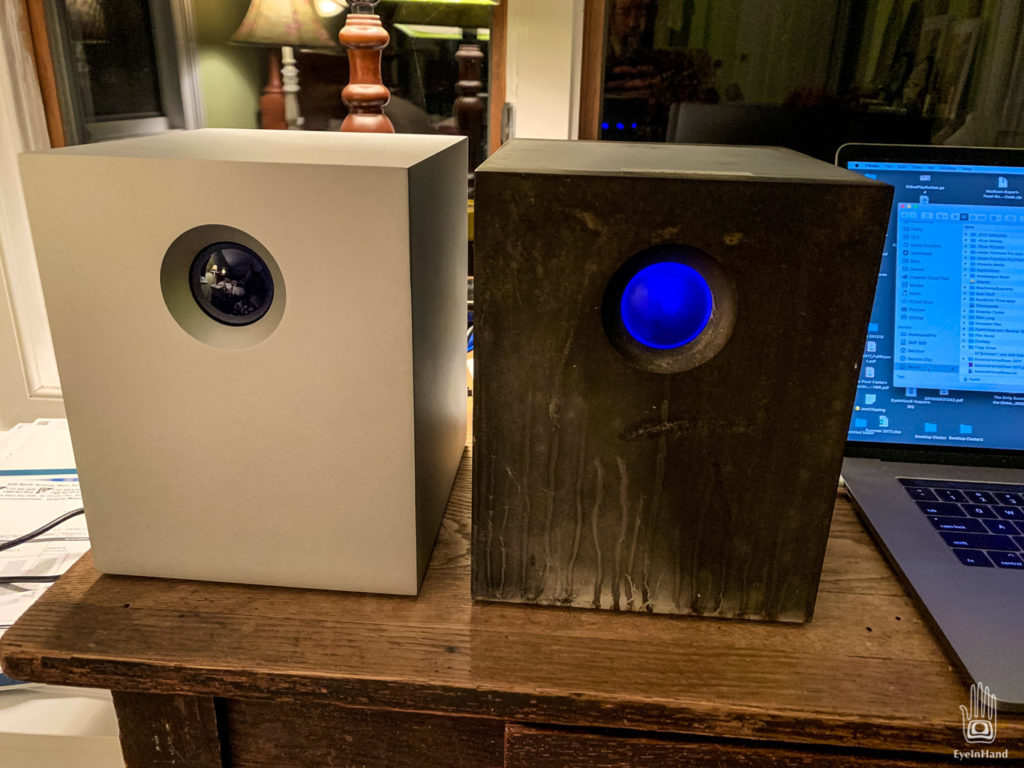
Paying extra for the good stuff paid off this time. The cheaper drives, with cases made of plastic, all melted. I’ll still try to save a couple of those, but chances are slim. The LaCie 5Big RAID was expensive. Twice the cost of cheaper drives of comparable capacity, but made of metal, with premium drives and controllers, it took it all like a champ apparently. Even the LEDs and power buttons survived the heat.

Sometime in the next few days, a third party replacement power supply will arrive. Then I can connect the new and old together and start the transfusion, transferring a lifetime of imagery, digital lifeblood, to the new host.
Hallelujah.
There are places in this world that punch above their weight. People have a sense for them, and congregate there. As do other living things: salmon, bears, whales, herds of elk. Wolves.
These are places where something happens.
It might be a fall line where water breaks. Or a predictable fissure in the ice, formed by sub-ocean currents. Maybe a pass through the mountains.
A creek deep in the woods, surrounded by tall trees.
We find them. Collect there. We meet, and fight, and mate there. Connected by lines of force, which we follow like ancient game trails. Invisible, but inveterate.
Nowhere else.
The in-between places are deserts.
These are the oases.

December 12, 2018
I’ve back-dated this post. Looks like it didn’t come through when sent from my phone on the front porch, 12 hours after the fire.
I’m not going to post a lot of photos from the interior. There’s a grim surreal beauty to it, which is not lost on me; but for me those will be easier to look at once the restoration gets well down the road. I’ll save them for then.
For now, here are just a couple from the Living Room. The fire started in the outside wall at the sill, in the floor between this room and the basement. Lots going on there – three iterations of electrical wiring going back to maybe the ’30s (the house was built in 1919), plus the chimney, plus rodents coming in from the snow, etc.. Inspectors say they may never know for sure what caused it.
Astute followers will recognize this view, though somewhat altered. There were once over 2,000 books here and in the next rooms, which I’m told unsulated the house structure from the worst of the fire, all gone now.
We’re presently living in a cozy little two room cottage about a half mile away, where we may remain throughout the yearlong rebuild process.
Our little town is amazing. We’ve always known that. The past two weeks, though, showed just how amazing it is. And more surprising, how very big our little town truly is. The flood of kindness and generosity has been overwhelming, from near and far – across the street, across the country, across the world even – from friends and family, and people who don’t even know us.
We steel ourselves against all the bad we know will come one day, prepare to do the hard things just so we can get through them. But we never prepare for the unexpected good. The good has slayed us.
People are amazing. Really and truly amazing.
Thank you for being part of our town. Thank you all.
Barry & Terri